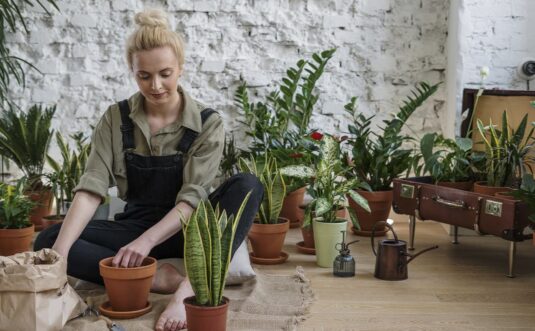Throughout history, individuals have used flowers as a means of conveying messages, with each flower carrying its own distinct symbolism and significance. Flowers have the remarkable ability to express a wide variety of emotions, ranging from love and warmth to empathy and sadness. Their language transcends linguistic and cultural barriers, resonating with the deepest facets of human life and experience. In this exploration, we delve into the captivating world of floral symbolism and explore how it enriches our lives through artistic expression, personal connections, and cultural traditions. By understanding the nuanced language of flowers, we gain insight into a timeless form of communication that continues to evolve and inspire.
Understanding Floral Symbolism
Since time immemorial, flowers have carried significance that varies across cultures, customs, and personal viewpoints. For example, the rose often symbolizes love and passion, while the lily is commonly connected to innocence and purity. Florists’ understanding of these meanings allows them to create arrangements that effectively communicate emotions and sentiments, enabling people to express themselves in a meaningful and nuanced way. By carefully selecting and combining different flowers, skilled designers can craft compositions that convey complex messages, adding depth and personal touch to their creations.
Creating Personalized Arrangements
Crafting messages and evoking emotions stands out as an element, in floral design adding to its charm. Florists work closely with their clients to create displays that mirror their emotions and life experiences whether celebrating moments or offering solace in times of sorrow. This bond goes beyond words, touching hearts and souls profoundly by selecting flowers that hold significance for the recipient. The magic lies within the flowers themselves.
Similar to linguists floral designers grasp the nuances of symbolism to craft arrangements that convey deep meanings without speaking a word. Like how a sharp card player interprets their opponent’s cues florists understand the subtleties of color and composition to express emotions through blooms. Their artistry speaks volumes without the need, for communication.
Honoring Tradition and Culture
Floral design not only lets people showcase their uniqueness but also holds importance in honoring cultural heritage and traditions. Different cultures have customs and ceremonies related to floral decorations, such as using flowers in religious rituals, cultural events, and seasonal celebrations. The vibrant hues of flower garlands in Indian weddings and the simple elegance of Japanese ikebana exemplify how flowers act as a universal form of communication that unites people across various ages and nations. By incorporating traditional floral practices into modern designs, artists and florists can create bridges between the past and present, fostering a deeper appreciation for cultural diversity and shared human experiences.
The Healing Power of Flowers
Flowers are not only beautiful to look at and rich in symbolic significance, but they also possess remarkable medicinal properties that nourish the mind, body, and spirit. Numerous studies have provided evidence that being in the presence of flowers can alleviate stress, boost mood, and increase general well-being. This phenomenon, often referred to as “flower therapy” or “horticultural therapy,” has gained recognition in various fields of health and wellness. The transforming influence that flower arrangements have on our environment is particularly notable, whether they are placed in hospitals, nursing homes, or private households. These vibrant bouquets promote healing and rejuvenation during times of need, offering a natural and aesthetically pleasing complement to traditional medical treatments. The simple act of tending to plants or arranging flowers can also provide a meditative and calming experience, further contributing to their therapeutic effects.
Final Thoughts
In conclusion, the language of flowers is a rich and vibrant tapestry that enriches our lives in countless ways, weaving together elements of art, culture, emotion, and healing. Whether celebrating life’s milestones, expressing love and gratitude, or finding solace in times of sorrow, flowers serve as a timeless reminder of the beauty and resilience of the human spirit. Through thoughtful design and heartfelt expression, florists continue to weave this intricate language into our daily lives, creating moments of joy, comfort, and connection that endure for generations to come. As we move forward in an increasingly digital world, the enduring appeal of flowers reminds us of our deep connection to nature and the power of non-verbal communication. By embracing the language of flowers, we open ourselves to a world of subtle yet profound expression, allowing us to communicate our deepest emotions and honor the full spectrum of human experience in a uniquely beautiful way.




